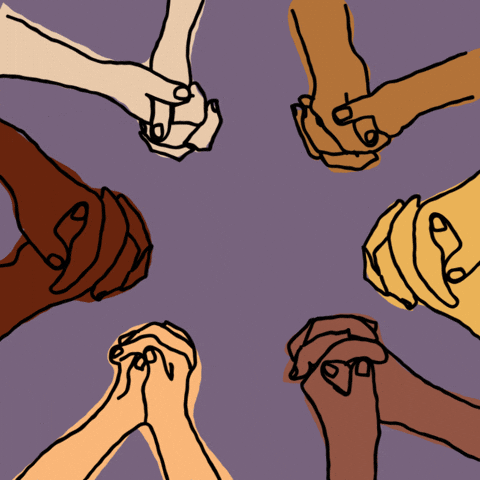In the rich tapestry of Bahá’í teachings, the practice of communal prayer stands as a vital thread, harmonizing individual devotion with collective spiritual growth. This aspect of the Bahá’í Faith emphasizes the interconnectedness of all believers, fostering a profound sense of unity and togetherness. This article delves into the various dimensions of communal prayer, exploring its significance, different forms, and the resulting profound impacts on the community.
The Bahá’í perspective on prayer intricately intertwines with the overarching theme of unity and fellowship. At its core, prayer is a means not only of individual supplication but also a collective endeavor that reinforces bonds amongst participants. It is through group prayer that community members engage in a shared spiritual experience, transcending individualistic practices that may detract from a cohesive communal identity.
Within the framework of Bahá’í teachings, communal prayer can manifest in several forms. Each form embodies unique characteristics while reflecting the same underlying principles of unity and reverence.
1. Devotional Gatherings
Devotional gatherings are a staple in the Bahá’í community, typically held in homes, community centers, or even open public spaces. These gatherings often include readings from the Bahá’í texts, prayers, and songs, which not only enhance the spiritual atmosphere but also nurture the collective spirit. Participants take turns sharing their reflections or insights on particular passages, fostering a dynamic and engaging environment.
These gatherings serve multiple purposes – they deepen the faith of participants, cultivate a sense of belonging, and enable the exploration of spiritual themes within a communal context. The act of praying together reinforces the idea that prayer is not merely a solitary act but a shared pursuit of divine connection.
2. Feast
The Nineteen Day Feast is another quintessential model of communal prayer in the Bahá’í tradition. Occurring every 19 days, it encapsulates a three-part structure: spiritual, administrative, and social. The spiritual portion is predominantly focused on prayer and devotion, where attendees engage in collective prayer and scriptural reading. This segment sets the spiritual tone for the gathering, facilitating an atmosphere conducive to reflection and contemplation.
The administrative aspect involves discussions regarding community affairs and aspirations, while the social dimension allows members to connect on a personal level, thus strengthening communal ties. This triadic structure ensures a holistic approach to communal functioning, integrating spiritual sustenance with practical and social needs.
3. Interfaith and Public Gatherings
In the spirit of fostering unity among diverse cultures and religions, the Bahá’í community actively participates in interfaith and public gatherings. These events often invoke communal prayers from various religious traditions, promoting an ethos of respect for diverse beliefs and practices. By doing so, Bahá’ís exemplify the principle of universal kinship, affirming that all humanity shares a common spiritual ancestry.
Such gatherings require a delicate balance of promoting one’s beliefs while respecting the beliefs of others, creating a safe space for dialogue and collective spiritual reflection. They serve as a reminder that, irrespective of theological differences, the longing for divine connection transcends boundaries.
4. Prayer in Service Projects
Many Bahá’ís incorporate prayer into service projects, where community members collectively engage in acts of service for the betterment of society. These projects often begin with a moment of prayer, asking for divine guidance and blessings on the endeavor. This fusion of prayer and action underscores the Bahá’í principle that service is intrinsically spiritual, with prayer serving as a means to align intentions with divine will.
Through prayerful engagement in service, community members not only enhance the quality of life in their communities but also deepen interpersonal relationships. This synergy between spiritual practice and active service remarkably enhances community resilience and cohesion.
5. Rituals and Observances
Certain Bahá’í observances, such as the observance of the Fast or the celebration of Holy Days, also provide opportunities for communal prayer. During these occasions, believers come together in an environment that fosters collective spirituality. The communal aspect of such observances is enhanced through prayer and the sharing of reflections on the significance of the occasion.
The joy of participating in these spiritual rituals reinforces a sense of collective identity and shared experience, fostering a deeper understanding of Bahá’í teachings and principles.
Through shared prayer, the Bahá’í community discovers a means of building deeper connections among members, embracing diversity, and enhancing the communal experience of spirituality. The act of coming together, regardless of personal circumstances or backgrounds, cultivates an environment steeped in mutual support, respect, and love.
In endeavors where prayer acts as a binding force, individuals can converse on both profound and mundane topics, creating an enriched tapestry of lives interwoven through spiritual kinship. As Bahá’ís gather to pray, they not only nourish their own souls but also contribute to a thriving, harmonious community. The act of praying together is not merely ritualistic; it is a powerful catalyst for collective progress, a tangible expression of their commitment to unity and service.
In conclusion, the importance of communal prayer within the Bahá’í framework cannot be overstated. It encapsulates the essence of the Faith, where individual aspirations meet a communal ethos, allowing members to grow holistically. As the Bahá’í teachings continue to inspire individuals around the world, the practice of praying together serves as a beacon of hope, guiding communities toward a future defined by love, understanding, and cherished harmony.
